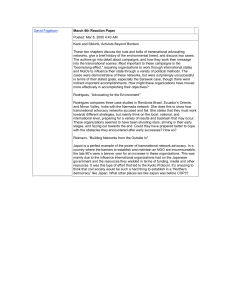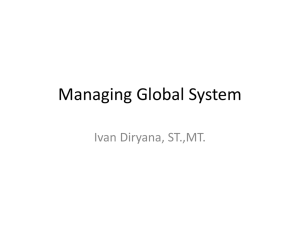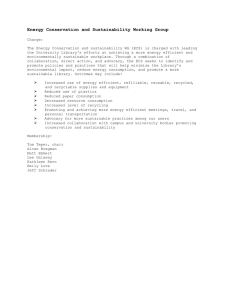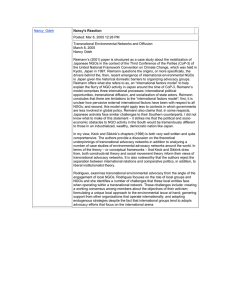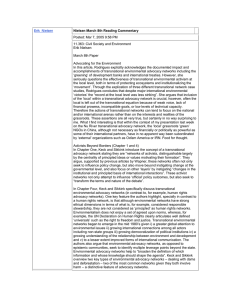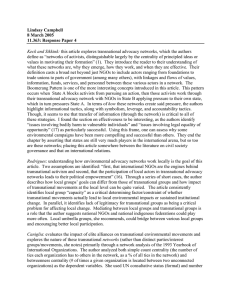Emily Greenspan March 8 Reaction Paper - Emily
advertisement
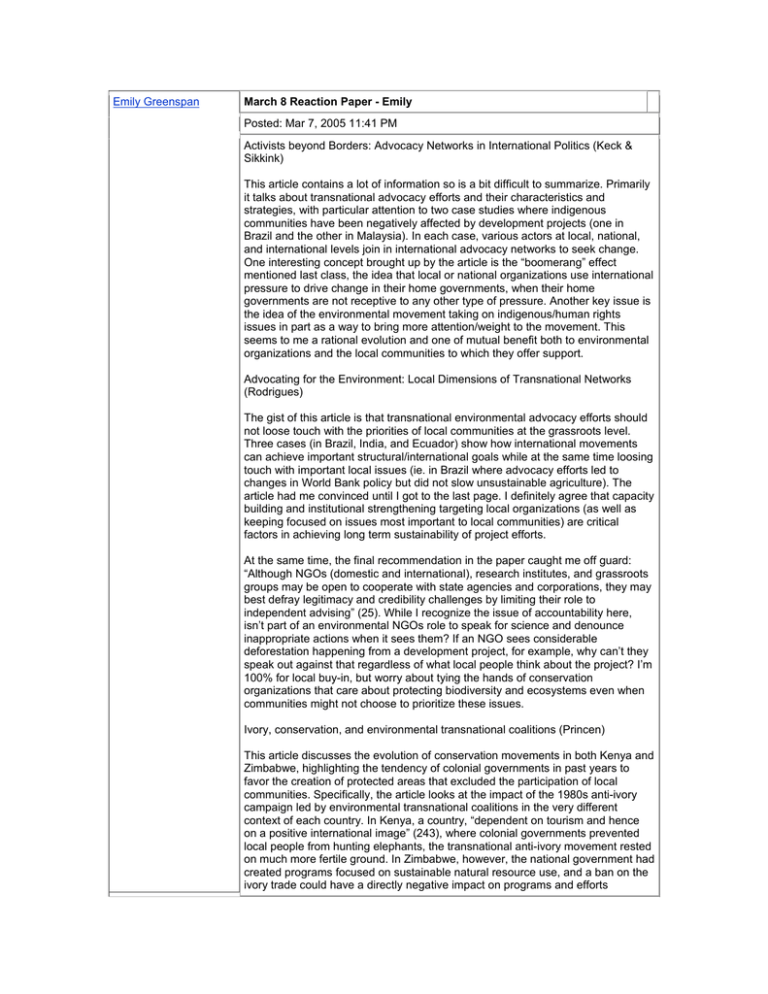
Emily Greenspan March 8 Reaction Paper - Emily Posted: Mar 7, 2005 11:41 PM Activists beyond Borders: Advocacy Networks in International Politics (Keck & Sikkink) This article contains a lot of information so is a bit difficult to summarize. Primarily it talks about transnational advocacy efforts and their characteristics and strategies, with particular attention to two case studies where indigenous communities have been negatively affected by development projects (one in Brazil and the other in Malaysia). In each case, various actors at local, national, and international levels join in international advocacy networks to seek change. One interesting concept brought up by the article is the “boomerang” effect mentioned last class, the idea that local or national organizations use international pressure to drive change in their home governments, when their home governments are not receptive to any other type of pressure. Another key issue is the idea of the environmental movement taking on indigenous/human rights issues in part as a way to bring more attention/weight to the movement. This seems to me a rational evolution and one of mutual benefit both to environmental organizations and the local communities to which they offer support. Advocating for the Environment: Local Dimensions of Transnational Networks (Rodrigues) The gist of this article is that transnational environmental advocacy efforts should not loose touch with the priorities of local communities at the grassroots level. Three cases (in Brazil, India, and Ecuador) show how international movements can achieve important structural/international goals while at the same time loosing touch with important local issues (ie. in Brazil where advocacy efforts led to changes in World Bank policy but did not slow unsustainable agriculture). The article had me convinced until I got to the last page. I definitely agree that capacity building and institutional strengthening targeting local organizations (as well as keeping focused on issues most important to local communities) are critical factors in achieving long term sustainability of project efforts. At the same time, the final recommendation in the paper caught me off guard: “Although NGOs (domestic and international), research institutes, and grassroots groups may be open to cooperate with state agencies and corporations, they may best defray legitimacy and credibility challenges by limiting their role to independent advising” (25). While I recognize the issue of accountability here, isn’t part of an environmental NGOs role to speak for science and denounce inappropriate actions when it sees them? If an NGO sees considerable deforestation happening from a development project, for example, why can’t they speak out against that regardless of what local people think about the project? I’m 100% for local buy-in, but worry about tying the hands of conservation organizations that care about protecting biodiversity and ecosystems even when communities might not choose to prioritize these issues. Ivory, conservation, and environmental transnational coalitions (Princen) This article discusses the evolution of conservation movements in both Kenya and Zimbabwe, highlighting the tendency of colonial governments in past years to favor the creation of protected areas that excluded the participation of local communities. Specifically, the article looks at the impact of the 1980s anti-ivory campaign led by environmental transnational coalitions in the very different context of each country. In Kenya, a country, “dependent on tourism and hence on a positive international image” (243), where colonial governments prevented local people from hunting elephants, the transnational anti-ivory movement rested on much more fertile ground. In Zimbabwe, however, the national government had created programs focused on sustainable natural resource use, and a ban on the ivory trade could have a directly negative impact on programs and efforts promoting sustainability. Ultimately, the take away point is that, “solutions to global environmental problems such as species loss must be tailored to conditions at the level of the ecosystem and the local community” (252). This article makes a lot of sense, and I think the trends in conservation have been towards ensuring that advocacy efforts take into account the need to consider sustainable development and not just preservation. For example, many organizations are advocating programs like voluntary forest certification to link efforts to halt deforestation with efforts to generate employment and ensure sustainable resources for local communities.
